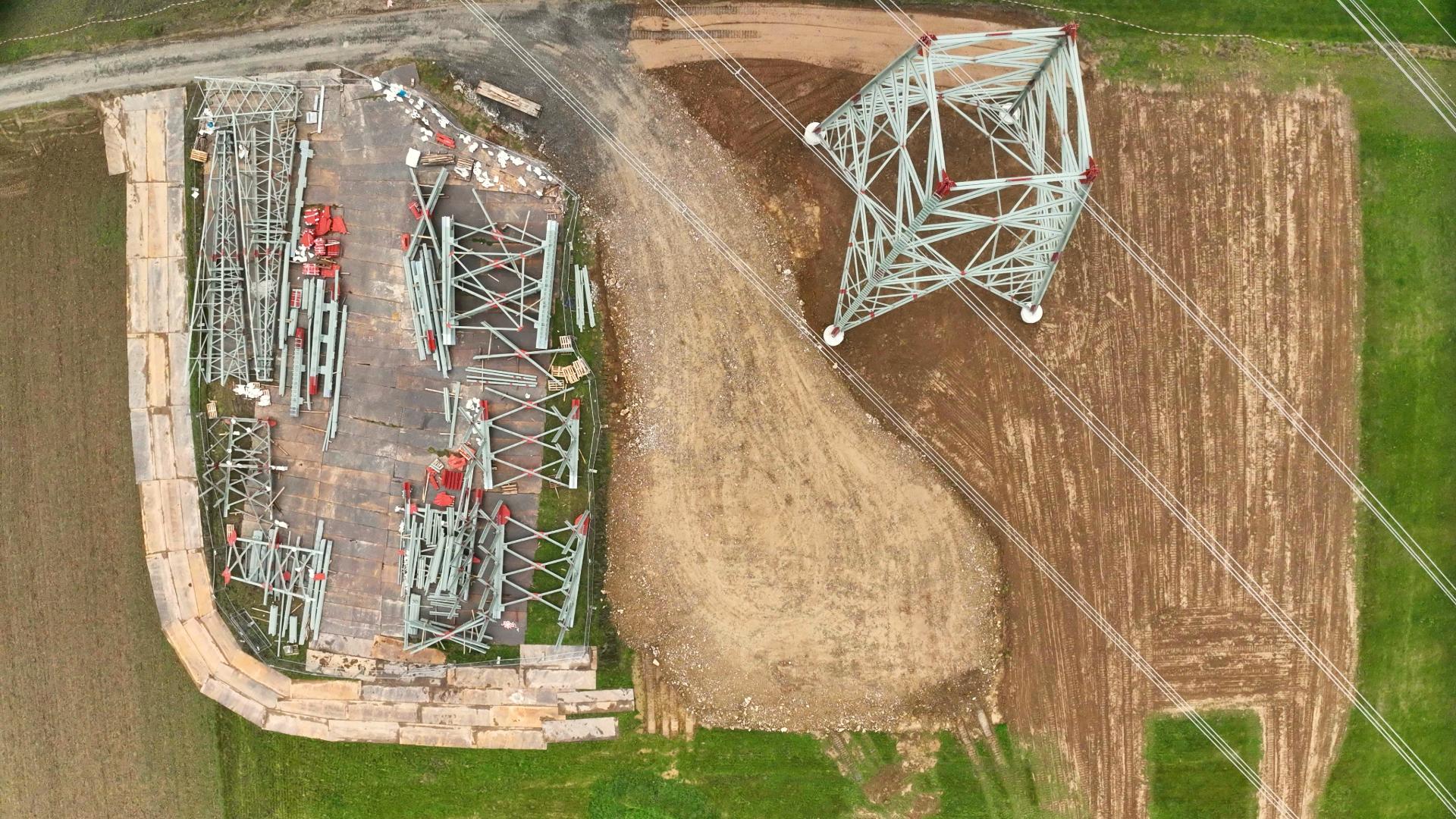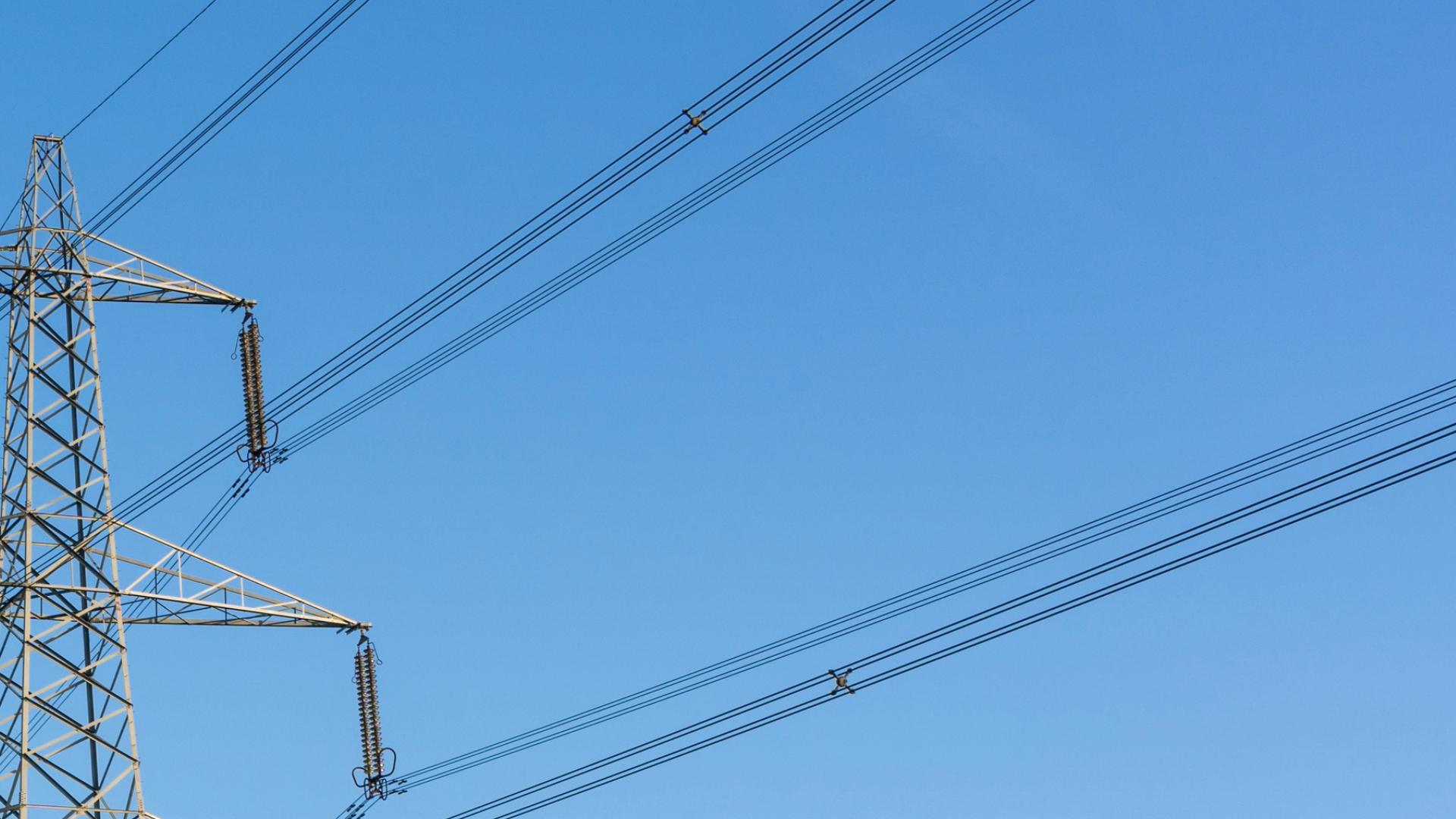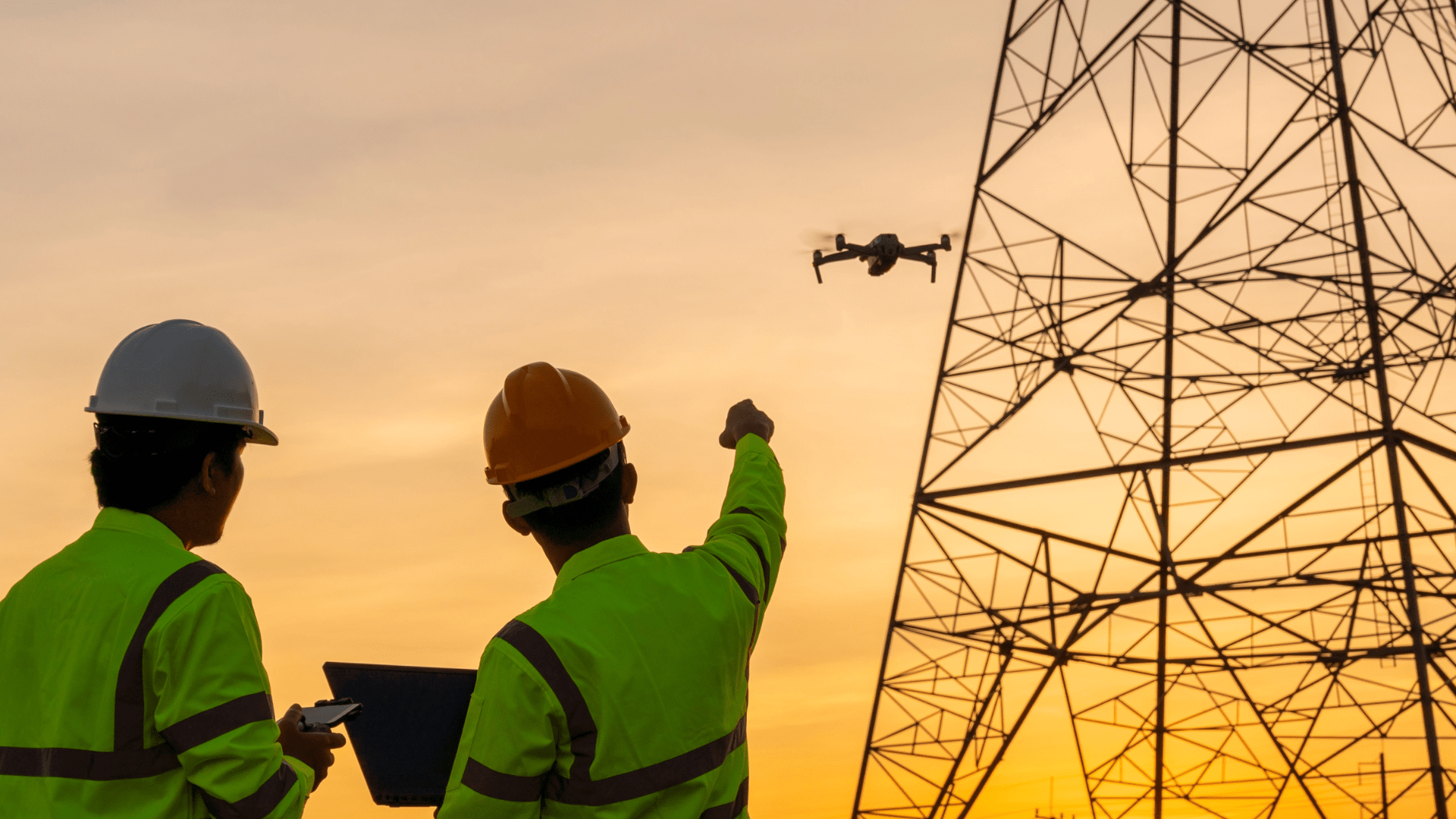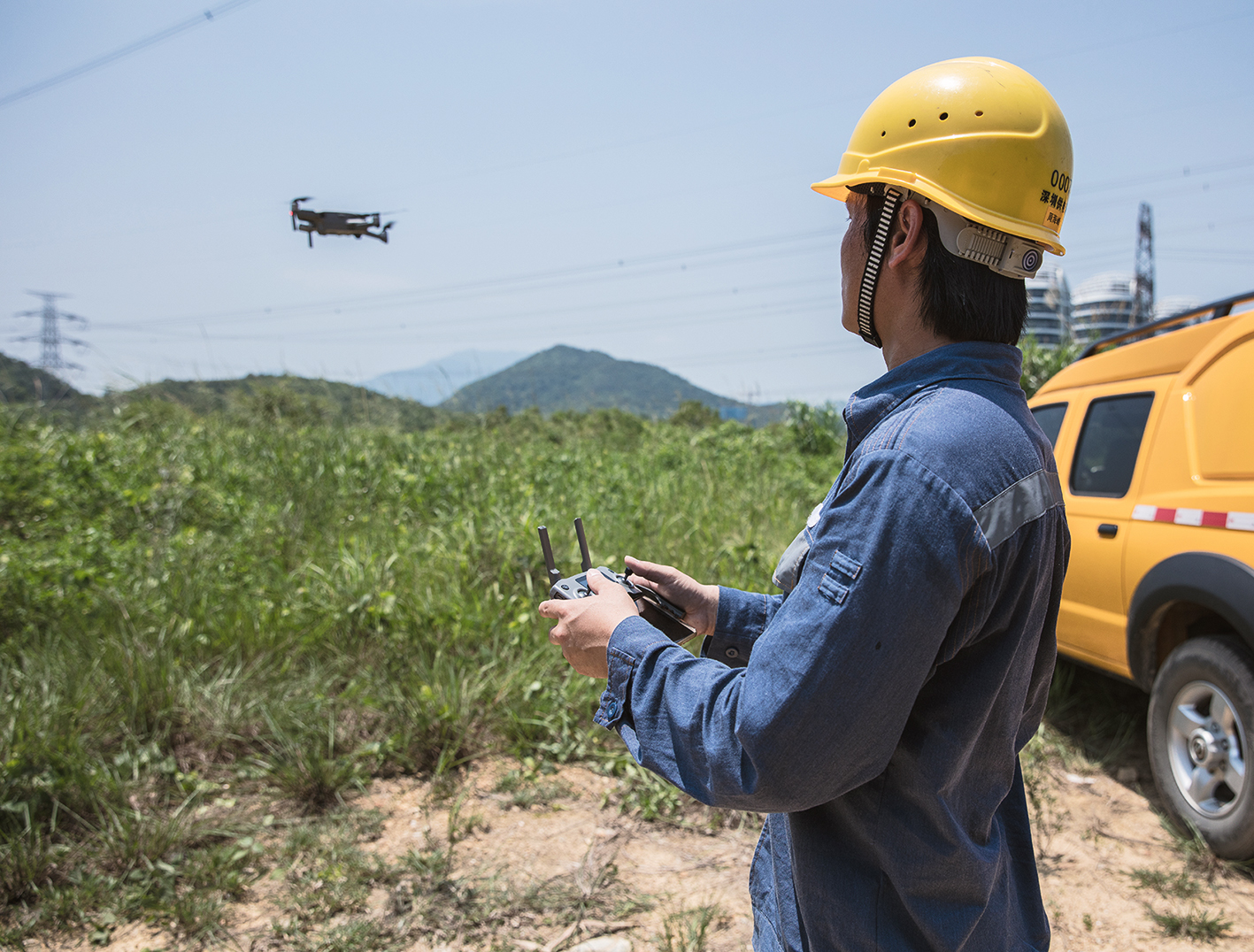Für Inspektionen von Photovoltaikanlagen ist der Einsatz von Drohnen ein entscheidender Faktor zur Reduzierung der benötigten Zeit. Unser Partner UCAIR nutzt Drohnen in Kombination mit unserer Projektmanagementsoftware HORIZON, um den gesamten Workflow der Inspektion darüber abbilden zu können. Durch ihre zahlreichen Inspektionseinsätze konnte UCAIR ihre ermittelten Daten in einer Statistik auswerten und so eine Studie über die Häufigkeit der Defekte bei PV-Anlagen herausarbeiten.
Drohnen beschleunigen die Inspektionen von PV-Anlagen
Demzufolge traten bei 128 Inspektionen im Jahr 2017 in 75 % der bestehenden PV-Anlagen Defekte auf. Die am meisten vorgefundenen Defekte waren Hotspots, die durch den Einsatz einer Wärmebildkamera sehr einfach zu lokalisieren sind. UCAIR verwendet für diese Art von Inspektionen vorzugsweise Drohnen, da diese deutlich schneller arbeiten, als Monteure mit Handkameras. PV-Anlagen mit einer Größe bis zu 10 MWp (Megawatt peak) können dank des Einsatzes einer Inspektionsdrohne an einem einzigen Tag inspiziert werden.
Die fünf häufigsten Defekte an PV-Anlagen
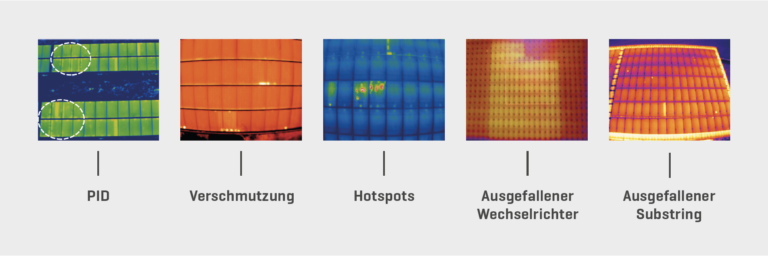
5 Bilder der häufigsten Defekte bei Photovoltaikanlagen (Quelle: UCAIR)
PID
Der sog. Potenzialunterschied zwischen Solarzellen und Erde. Die Folge sind zu hohe negative Spannungen zwischen den Zellen und dem Rahmen der einzelnen Module. Dies kann im schlimmsten Fall zu lokalen Kurzschlüssen führen, die im Zweifel einen Brand auslösen können.
Hotspots
Die Ursachen für Hotspots sind Verschmutzungen, mechanische Schäden und Modul-interne Fehler, wie z.B. unsaubere Lötstellen. Diese führen zu einer Verringerung des Widerstands in einer Zelle. Die Spannung erhöht sich und in Folge dessen kann zu einem Kurzschluss kommen. Daher sollten Hotspots unverzüglich repariert werden, da eine akute Brandgefahr besteht.
Verschmutzungen
Verschmutzte Module erzeugen weniger oder gar keinen Strom. Die Gründe hierfür können Staub, tote Insekten oder Vogelkot sein. Die Module sind normalerweise geneigt, sodass in der Regel bei Regen ein Großteil der Verschmutzungen bereits auf natürliche Weise gereinigt wird. Trotzdem kann es in trockenen Sommern dazu kommen, dass sich der Schmutz auf der Anlage festsetzt und eine Reinigung notwendig wird. Außerdem haben die Paneele auf einigen Photovoltaikanlagen einen zu geringen Neigungswinkel. Das hat zur Folge, dass mehr Schmutz darauf liegen bleibt und bei Regen nicht weggespült wird.
Ausgefallener Substring
Solarmodule bestehen üblicherweise aus 3 Substrings. Fällt einer dieser Strings aus, ist dies auf einer Thermografie gut erkennbar (siehe Abbildung oben). Häufig entstehen Defekte an diesen Substrings durch defekte Bypass-Dioden. Durch die Aufteilung einzelner Module in 3 Teile reduziert sich die Leistung dieses Moduls bei einem defekten Substring um 33 %.
Je größer die Anlage, desto größer die Wahrscheinlichkeit eines Defekts
Laut der Studie von UCAIR liegt die Wahrscheinlichkeit für Defekte oder Verschmutzungen bei Anlagen mit über 100 kWp Leistung bei 100 %.
Defekte und Verschmutzungen sind auf Wärmebildern (sog. Thermografien) sehr gut zu erkennen.
Da Thermografiekameras pixelgenau Temperaturunterschiede erfassen, kann vor einer Wartung, bzw. nach einer Inspektion eine Schadstelle eindeutig identifiziert werden und so der Fehler bzw. die Verschmutzung gelöst oder gereinigt werden. Die Effizienz der Anlage wird dadurch gesteigert und daraus resultiert ein höherer Ertrag.
Reinigung von PV-Anlagen
Verunreinigte Photovoltaikanlagen liefern weniger Erträge, da die einzelnen Zellen nicht ihren vollständigen Wirkungsgrad erreichen können. Um festzustellen, ob eine Anlage effizient arbeitet, muss daher zuerst ihr Ertrag kontrolliert werden. Die Verschmutzung ist jedoch ein schleichender Prozess und häufig wird der Referenzwert der Anlage vom Betreiber vergessen. Hier kann eine Thermografieinspektion Klarheit schaffen und Verschmutzungen visualisieren. Gerade die Kontrolle großer Anlagen kann sehr zeitintensiv sein, wenn diese von einem Monteur samt Handkamera inspiziert werden muss. Drohnen schaffen hier Abhilfe, denn diese können große Areale in kurzer Zeit komplett abfliegen. Die Daten, die von den Wärmebildkameras der Drohne aufgezeichnet werden, sind zudem detaillierter. Der Grund hierfür ist der deutlich vorteilhaftere Aufnahmewinkel, den eine Drohne gegenüber einer Handkamera einnehmen kann. Beispielsweise ist es deutlich einfacher, Reflexionen in den Aufnahmen zu vermeiden.
Die Umgebung einer PV-Anlage spielt natürlich auch eine große Rolle bei der Verschmutzung. Wenn sich viele Bäume in der Umgebung befinden, können Blütenstaub, Blätter oder Nadeln die Anlage verunreinigen. Da häufig Vögel auf Bäumen nisten, erhöht sich zudem die Wahrscheinlichkeit, dass eine Photovoltaikanlage durch Kot beschmutzt wird.
In trockeneren Gebieten muss häufiger gereinigt werden, da hier der Niederschlag zu selten ist, um die Anlage auf natürliche Weise zu reinigen.

(PV-Anlage mit 146 MWp in der Atacama Wüste in Chile. Foto: Antonio Garcia)
UCAIR empfiehlt daher als Faustregel, PV-Anlagen entweder bei Ertragsverlust oder aber mindestens alle 1-2 Jahre kontrollieren zu lassen. Die Wartung der Anlage sollte jedoch immer einhergehen mit einer vorherigen Inspektion, um nicht nur die Verschmutzung, sondern auch alle Defekte zu beseitigen. Die Reinigung einer Anlage schlägt mit ca. 1,50 – 2,50 € pro m² zu Buche. Diese Kosten können jedoch amortisiert werden, denn in einem Zeitraum von zwei bis drei Jahren kann eine PV-Anlage einen Verlust von bis zu 15 % erreichen – allein durch Verschmutzungen.
Wenn man hierzu noch die 75 % der Anlagen addiert, die bei den Inspektionen durch UCAIR Defekte aufwiesen, so kann man nur zu dem Entschluss kommen, dass eine regelmäßige Inspektion für Solar- und Photovoltaikanlagen unabdingbar ist.
Integriertes Projektmanagement, um den Workflow noch weiter zu verbessern
Drohnen erleichtern die Arbeit bei Inspektionen von Photovoltaikanlagen, aber die Drohne ist nur ein Werkzeug, welches in den Arbeitsalltag integriert werden muss. Hier bietet unsere Software HORIZON die Grundlage. Der Ablauf ist denkbar einfach: Die Drohneneinsätze können mit wenigen Klicks vollständig innerhalb von HORIZON geplant werden. UCAIR nutzt die Möglichkeit unserer Datenquellen, um festzustellen, ob eine Fluggenehmigung für den einzelnen Flug nötig ist. Mit unserer Validierung ist es auch möglich, das Genehmigungsverfahren beim Gesetzgeber zu vereinfachen. Durch die Integration von über 165 validen Quellen für Geodaten ist unsere Datenbank die derzeit umfangreichste am Markt. So kann sehr präzise geplant und mögliche Flugverbotszonen umgangen werden.
Ein weiterer Vorteil unserer Lösung ist das Flottenmanagement. Für ein Unternehmen wie UCAIR, welches über zahlreiche Drohnen und Piloten verfügt, ist dieses integriertes Management ein klarer Vorteil gegenüber herkömmlichen Methoden der Bestandskatalogisierung. Die Piloten wiederum können direkt ihre Flugroute einsehen und die gesamten Projektdaten abrufen.
Nach der Befliegung können die Ergebnisse direkt wieder in die Software geladen werden und ortsunabhängig von einem Experten ausgewertet werden. Das bietet die Möglichkeit, die Tätigkeit des Piloten und Inspekteurs räumlich voneinander zu trennen, sodass Piloten deutschlandweit eingesetzt werden können, während die Datenauswertung zentral im Firmenstammsitz erfolgen kann. Darüber hinaus können die Messergebnisse dem Kunden über HORIZON übermittelt werden.
Der Anwendungsfall von HORIZON bei unserem Partner UCAIR zeigt, wie sich unsere Projektmanagementsoftware in den täglichen Betrieb integrieren lässt und so dabei unterstützt, Drohneneinsätze von der Planung über die Befliegung bis hin zur Analyse der erhobenen Daten zu koordinieren.
Ihr FlyNex Team
